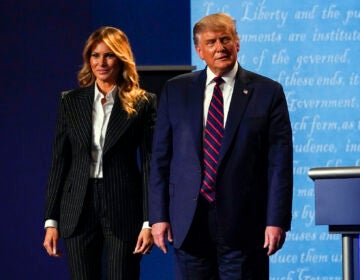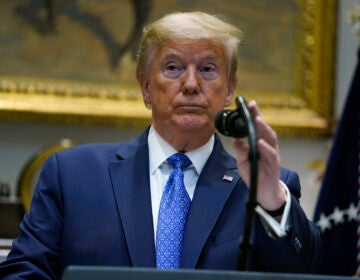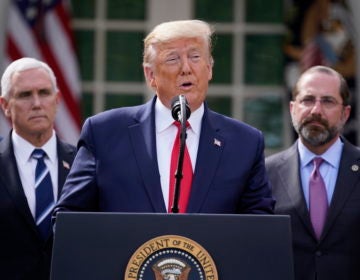Watch live: White House to hold coronavirus briefing amid stimulus bill uncertainty
Last-minute objections are holding up a massive aid package that President Trump had been expected to sign.
The White House’s pandemic task force is scheduled to convene another briefing on Wednesday afternoon amid a tense denouement for legislation aimed at helping an economy poleaxed by the disaster.
Last-minute objections on Wednesday threw the status of the bill into uncertainty after many proclamations of victory by other lawmakers about its contents.
A group of Republicans said they considered the unemployment provisions in the relief legislation to be too generous — Sen. Tim Scott, R-S.C., said Congress couldn’t create a situation in which he said people would be rewarded more for being out of work than for their previous jobs.
At the same time, at least one liberal senator — Vermont’s Bernie Sanders, an independent who caucuses with Democrats and is running for president — said he would stop the legislation over what he called its “corporate welfare” if Scott and the Republicans didn’t give way.
The late skirmishing created an awkward gap between the claims of success by many members of Congress, including Senate Majority Leader Mitch McConnell, R-Ky., and the slogging that appeared to remain necessary to actually get the bill passed and then signed by President Trump.
The president is expected to sign it; Treasury Secretary Steven Mnuchin has been negotiating on his behalf with McConnell and Democrats — led in the Congress by House Speaker Nancy Pelosi and Senate Minority Leader Chuck Schumer.
But the work has been slower than hoped as members of Congress wrangle over what could be the largest such support legislation in American history, one with a headline value of some $2 trillion.
Crisis worsens
The coronavirus disaster is worsening by the day. Cases in the United States have surpassed 60,000 with nearly 900 deaths.
Officials in New York have warned they don’t expect infections to peak for weeks or months; California and Washington state also remain badly afflicted too.
But the different times of arrival by the virus in various locations means that numbers of cases are increasing at different rates in unexpected new places; New Orleans, for example, has now seen about 40 deaths as the infection appeared to accelerate there.
Schools and businesses are closed across the nation as Americans stay home and avoid large groups in an attempt to slow the spread of the coronavirus. That has had deleterious consequences for restaurants, brick-and-mortar business and travel; millions of people could be out of work.
Trump’s timeline
Trump sought this week to shift the national mood from one of survival to one of transition, using Tuesday to talk up his hopes about reopening many of America’s shuttered businesses soon even as work continued fighting the contagion.
The president said in a Fox News special aired from the White House that he thought life might get back to normal by Easter. In a subsequent show he sketched out an imaginary scene of churches — many empty because of social distancing measures aimed at isolating the coronavirus — filled with worshippers for Easter services on April 12.
Trump’s goal is well within the limits set by many public officials and businesses around the United States; schools in many places still would be closed by the time of the scene he pictured on Easter Sunday.
The president sought to clarify later on Tuesday at a White House briefing that he’d let data and the recommendations of public health officials guide the federal recommendations about social distancing and other mitigation measures.
Calling it a “medical crisis, not a financial crisis,” Trump said he wanted to reassure the American public that any decision made on loosening mitigating measures currently in place, such as social distancing, would be made using the “best science, the best modeling and the best medical research there is anywhere on Earth.”
Trump said the administration would assess after next week whether or not current social distancing measures aimed at stemming the spread of the coronavirus will remain in place.
Wednesday marks day 10 of the 15-day period of the White House’s “15 Days To Slow The Spread initiative.”
The president also was expected to participate in a phone call with non-profit organizations on the COVID-19 response Wednesday afternoon.
WHYY is your source for fact-based, in-depth journalism and information. As a nonprofit organization, we rely on financial support from readers like you. Please give today.


![CoronavirusPandemic_1024x512[1]](https://whyy.org/wp-content/uploads/2020/03/CoronavirusPandemic_1024x5121-300x150.jpg)


